Tag: resuscitation
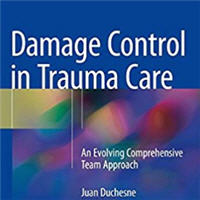
Damage Control in Trauma Care: An Evolving Comprehensive Team Approach
This book describes current, evidence-based guidelines for damage control interventions across the field of trauma care with the aim of enabling clinicians to apply them to best effect in daily clinical practice. Emphasis... read more
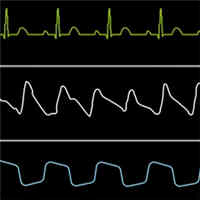
Pulse Oximetry Waveform: A Non-invasive Physiological Predictor for the ROSC During CPR
Pulse oximetry plethysmography (POP) may be a novel and effective method for predicting return of spontaneous circulation (ROSC) during resuscitation, with a prognostic value similar to ETCO2 at early stage. 150 out-of-hospital... read more
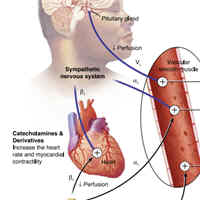
Vasopressor Choice and Timing in Vasodilatory Shock
Vasodilatory shock is the most common form of circulatory shock encountered in patients admitted to the intensive care unit (ICU). Sepsis is the predominant etiology, but other causes of vasodilatory shock include postoperative... read more

Acute Kidney Injury Related to Intoxication From Synthetic Cannabis
Acute kidney injury (AKI) occurs infrequently in young patients and often raises concern for irreversible or deadly etiologies. However, AKI related to synthetic marijuana, colloquially known as K2, is an increasingly common... read more

Epinephrine vs. Norepinephrine in Cardiac Arrest Patients with Post-resuscitation Shock
Among patients with post-resuscitation shock after out-of-hospital cardiac arrest, use of epinephrine was associated with higher all-cause and cardiovascular-specific mortality, compared with norepinephrine infusion. Until... read more

Percussion Pacing – An Almost Forgotten Procedure for Hemodynamically Unstable Bradycardias?
More than 80 years after its first description by Eduard Schott, percussion (fist) pacing remains a little known procedure even though it represents an instantly available and easy to perform treatment for temporary emergency... read more
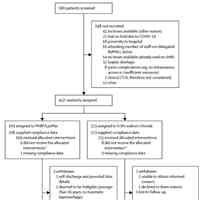
Resuscitation with Blood Products in Patients with Trauma-related Hemorrhagic Shock Receiving Prehospital Care
The trial did not show that prehospital PRBC–LyoPlas resuscitation was superior to 0·9% sodium chloride for adult patients with trauma related hemorrhagic shock. Further research is required to identify the characteristics... read more
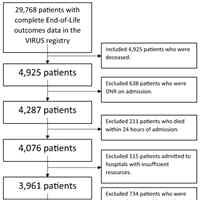
Palliative Care Consultation and End-of-life Outcomes in Hospitalized COVID-19 Patients
Palliative care consultation was not associated with CPR performed at the end-of-life but was associated with increased incidence of comfort care being utilized. These results suggest that utilizing palliative care consultation... read more

Balanced Fluid Resuscitation for the Critically-Ill: the PLUS study mirrors the BaSICS
Intravenous fluid therapy is one of the most commonly-performed interventions in all of critical care medicine. Numerous trials over the last 20 years have attempted to identify the ideal fluid for those in the intensive... read more
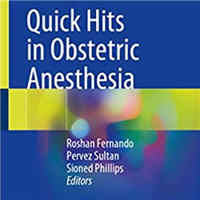
Quick Hits in Obstetric Anesthesia
This book provides easy to follow guidance on how to manage emergency situations and common problems in obstetric anesthesia. The book provides different anesthetic recipes for obstetric procedures and describes challenges... read more
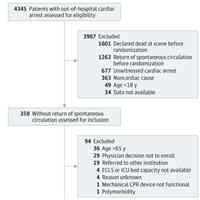
Effect of Intra-arrest Transport, ECPR, and Treatment on Functional Neurologic Outcome
Among patients with refractory out-of-hospital cardiac arrest, the bundle of early intra-arrest transport, extracorporeal cardiopulmonary resuscitation (ECPR), and invasive assessment and treatment did not significantly improve... read more

Arterial pH with Hemodynamic Response Association to Vasopressin in Patients with Septic Shock
Compared with higher arterial pH, patients with septic shock and low arterial pH had lower odds of vasopressin response and higher catecholamine doses after vasopressin initiation. Similar to other vasopressors, the clinical... read more

Resuscitation Using ECPR During In-Hospital Cardiac Arrest Mortality Prediction Score
The RESCUE-IHCA score can be used by clinicians in real time to predict in-hospital death among patients with in-hospital cardiac arrest (IHCA) who are treated with extracorporeal cardiopulmonary resuscitation (ECPR). A... read more
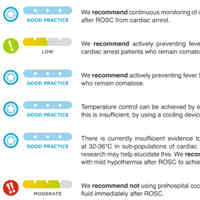
Guidelines on Temperature Control After Cardiac Arrest in Adults
The aim of these guidelines is to provide evidence‑based guidance for temperature control in adults who are coma‑tose after resuscitation from either in-hospital or out-of-hospital cardiac arrest, regardless of the underlying... read more




